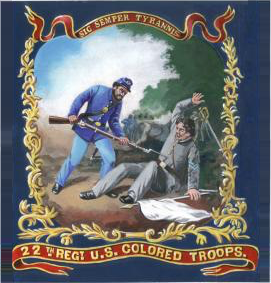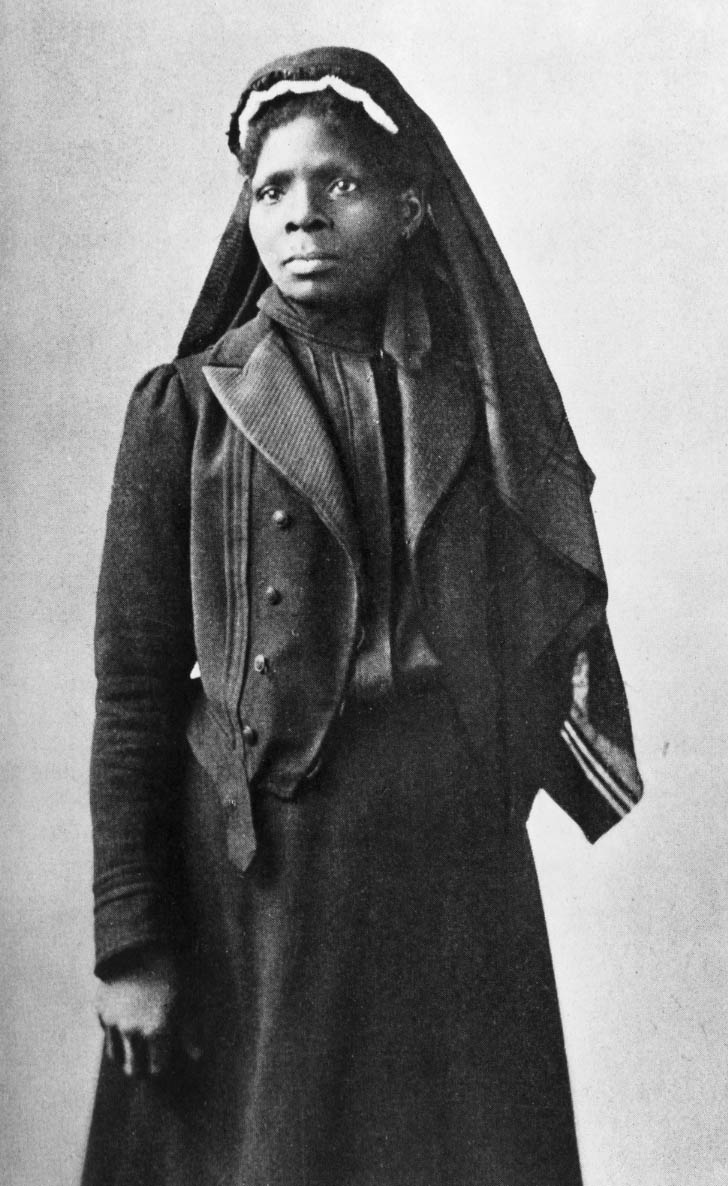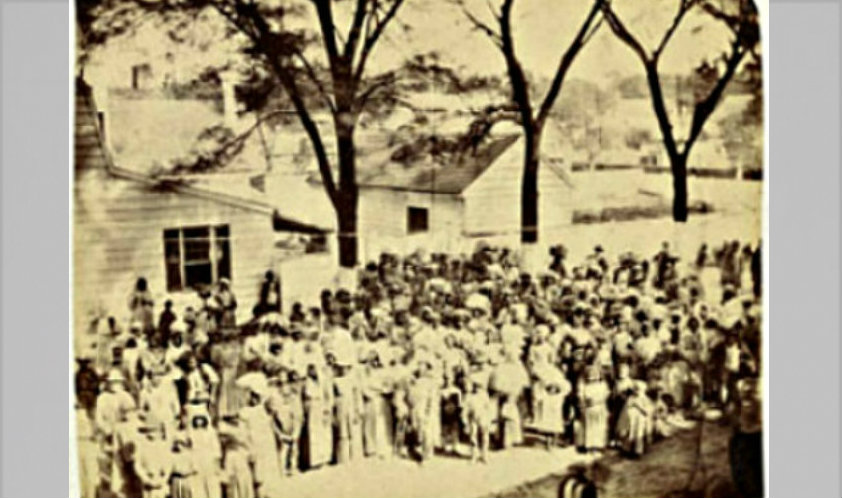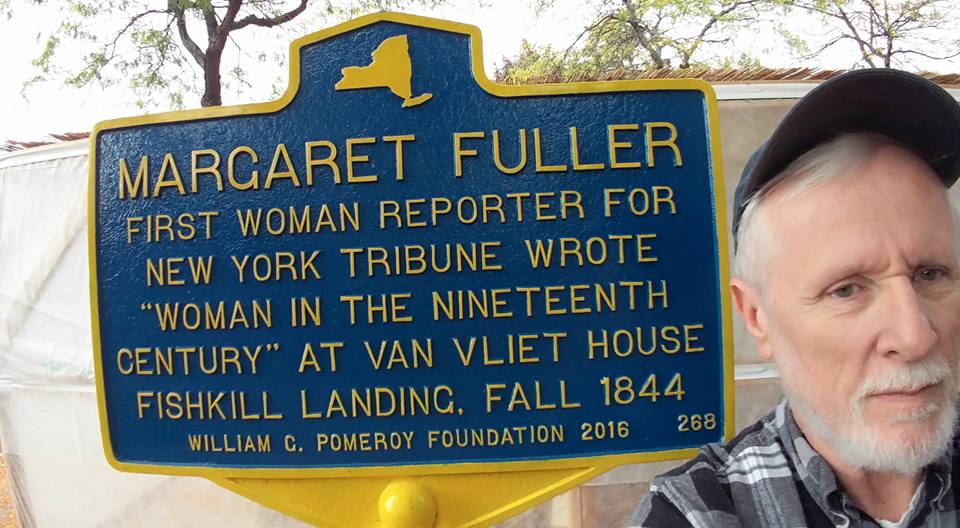When Margaret Fuller (1810-1850) died in the tragic shipwreck of the Elizabeth off Fire Island, she was the most famous woman in the United States and an international celebrity. If you poke around you will find people referring to her as “forgotten”, but if you try to read everything written about her in the last century, you will likely conclude that she has never been forgotten. Rather her historiographical stock has risen and fallen . There is probably a strong correlation with concern about the status of women.
This piece is not really about Margaret Fuller, it is about me and how I came to be a sort of Margaret Fuller fanboy (I was actually called that by somebody), but there may be a bit of a historiography lesson buried in there,
When I First Heard Of Margaret Fuller
I was introduced to Margaret Fuller sometime in early 1972. Perhaps ironically, that was the last semester that the College of the Holy Cross in Worcester Mass was all male. Fourteen transfers would make my Class of 1974 the first coed graduating class and I would end up marrying a member of the Class of 1977, but in 1972 I was hitchhiking to Brookline to sneak into one of the dorms at Emmanuel College to, you know, spend time with my girlfriend. I would lose her to her semester abroad in 1973, but at that point things were great in the girlfriend department.
Spring 1972 was my most academically disastrous semester at the College of the Holy Cross. I was an English major, but in an effort to be well rounded I had taken calculus and probability in the fall semester. I did so well that Mr. Dewey suggested I take Principles of Analysis II in the spring semester. Calc Prob was for economics majors and premeds and the like. Principles of Analysis was for physics and math majors. That would be the only C on my transcript.
In English, I was taking Hawthorne, Melville and Twain, so in a logical sort of move, I took The Young Republic in history with Doctor Beales. HMT was the only C+ on my transcript. Now if you are aiming to graduate cum laude at Holy Cross in my day you needed a 3.5 average. B+ keeps you even. For every B, you need an A. For every C+ you need two As and to offset a C you need 3. In the next four semesters, I did quite well, but it was not enough to recover from the Spring of 1972.
My best friend Victor, also an English major, stuck with the major and got to know the HMT professor well enough to gossip about me. It seems that the C+ was actually a break that he had given. I really deserved to fail, I was such an idiot. He could tell from the start that I just didn’t get it.
Zenobia
It was a different story over in history, where Young Republic was my only A that semester. I switched to history as my major. Reflecting on this experience, I have summed it up that my problem was that I thought Moby Dick was a story about a bunch of guys who worked in the whaling industry. Fundamentally, when it comes to literature I am pretty much into realism and that’s it. My favorite 20th Century author is James Gould Cozzens. I sometimes wonder why after Middlemarch was published anybody bothered to write another novel, but of course, then we wouldn’t have Guard of Honor. Ulysses, on the other hand, would be no great loss.
But what does any of this have to do with Margaret Fuller? Well, it was in HMT, that I first heard of her. She was Zenobia in The Blithedale Romance.
If it was mentioned that she was Hester Prynne in that class, it passed me by. Anyway the discussion to the extent there was one was about the effect that she had on men. She was the editor of the Dial – not that we read anything that was in the Dial. We didn’t get into the Transcendentalists much. The only one that was famous in our circles was Henry David Thoreau, because of that “different drummer” line. I remember going to Walden Pond with my girlfriend and some of her friends and Victor.
On literary characters inspired by Margaret Fuller, the speculation that she inspired Dorothea Brooke really intrigues me. I forget where I picked that up. There is also somebody in a Henry James novel, that I can’t remember. I started it, but kind of stalled. That happens to me a lot with 19th Century works, that I feel I must read. I was very proud that I finished Elective Affinities (in translation of course). I still have not dug into George Sand. Most embarrassing is that I have never been able to finish anything by Emerson.
Transcendentalism Not My Passion
Oddly enough one of my favorite professors, David O’Brien wrote a biography of a transient Transcendentalist, but Isaac Hecker never came up in any of his classes. As I moved into history, I was fascinated by the social reform movements of the antebellum United States. After flunking out of a prestigious graduate school (University of Chicago), I continued reading unsystematically about the period.
Among the people who fascinated me were Abby Kelley, Sojourner Truth, and Adin Ballou. I was attending the last church that Ballou had preached at before he founded Fraternal Communion Number 1 (turned out to be one and only), which ultimately morphed into the Town of Hopedale. (I had taken up Unitarian Universalism, but thanks to Ballou’s influence leaned more to the Universalist side.) Fuller’s name came up very rarely, but when it did I had this dull nagging sense that I should know more about her.
The Nineteenth Century Zelig
There was another Transcendentalist who seemed to pop up quite a bit. Half a generation younger than Fuller, Thomas Wentworth Higginson grew up with her younger brother and sisters. I think he tried to get some poetry in the Dial, but she turned him down, but I’m not sure about that and I am not going crazy trying to run things down for this piece.
Anyway, Higginson seemed to know everybody and there is a Zelig like quality to his long life (1825-1911). He was one of the founders of the Atlantic Magazine. In literary circles, he is best remembered for his role as Emily Dickinson’s corespondent. Whether he is a good guy or a bad guy in the Dickinson story varies with different narratives. If I remember rightly his stock is up in that regard in this Millenium.
So he is an important literary figure, but there is more. He was an activist in the 1850s helping to organize the first national women’s rights conference in Worcester in 1850. The sesquicentennial of that event inspired a play called Angels and Infidels.
I got to be part of the living scenery and even had a line. I was a little frustrated with the professional actors, who, with some exceptions, did not seem to fully appreciate the significance of the characters they were representing. Among them were Abby Kelley Foster, Lucy Stone, Sojourner Truth, Frederick Douglass, and William Lloyd Garrison. I asked them to autograph bios of their characters. I think they might have thought I was a little odd.
There is some talk that Margaret Fuller was invited to chair that convention. Of course, she couldn’t, being dead and all.
Colonel Higginson
Higginson, a Unitarian minister, had been fired by the congregation in Newburyport for his abolitionist views. In the fifties, he led the Free Church in Worcester, which does not appear to have survived his departure. Higginson was one of the Secret Six supporting John Brown. Higginson’s greatest claim to non-literary fame was his command of one of the first black regiments in the Union Army (By his account the first that was regularly mustered in), the First South Carolina Volunteers (later 33rd United States Colored Troops). His account of that experience, Army Life In A Black Regiment, is one of the best Civil War memoirs you will ever read.
So somehow I ended up on a Thomas Wentworth Higginson binge. He wrote a lot. I don’t think I have gotten to half of it, because I got sidetracked by one of the biographies. It was in, no kidding, a series called American Men of Letters with the title Margaret Fuller Ossoli. I can’t find the list, but I did find here that Margaret Fuller was the only one that was not, you know, a man. The Ossoli was also news to me.
Also, the short-lived Roman Republic was something I had never heard of or maybe forgot about. I think Dr. O’Brien would have covered it in Catholicism in a Revolutionary Age, but who knows?
My New Reading Binge
So I started on a binge of reading by and about this forgotten woman. Maybe she really was forgotten, like in 1985 for a couple of days or something. And what struck me more than anything was the story. This was the most romantic story in American history.
She’s smarter than all the guys she hangs around with who are pretty smart if you can put up with that Transcendentalist stuff. Everybody (by everybody I mean about 10% of college graduates and most of the people who live in Concord) knows their names, but they really never did much in terms of the movements. Their attempts at intentional communities were laughable compared to Hopedale which lasted seventeen years and morphed into a company town that carried some of the communal spirit into the late twentieth century. Compare that to Fruitlands and Brook Farm.
But Margaret Fuller! What a story! Emerson and the rest of the Transcendentalists are mainly important as a launching platform for Margaret Fuller (Except for Thoreau and On Civil Disobedience. That’s important.) Actually what I think happened is that Emerson et. al. had a tremendous influence, but it became so embedded in American thought that it is kind of boring. I have really tried to read Emerson, but just can’t seem to get far.
Fuller is also not that easy to read. There are a lot of classical allusions and references to contemporary writers, who are now pretty obscure. And Woman In The Nineteenth Century and Summer On The Lakes seem a little random. I like the journalism better, but it tends to be like every other column. Frankly, I got a lot more from reading the biographies, because more than anything it is the story of her life that I find so engaging.
Ahead Of Her Time
More than anybody else I can think of Margaret Fuller belongs more in our century than she does in her own. I also share Higginson’s view.
“I think that anyone who will study her in her own unreserved moments will now admit that what she always most desired was not merely self-culture, but a career of mingled thought and action, such as she finally found.“
What A Movie!
So it is the story that engages me. Why has nobody made a movie – an exciting biopic? Here we have a woman who is smarter than all the really smart, but kind of stuffy, guys she hangs out with. They actually extend themselves quite a bit even letting her into the library. Imagine that! Allowing a woman into the library.
She organizes group discussions for other women and the part I love about that is that, arguably, nobody really knows what went on in them in any great detail. She spends a lot of time thinking about the classics, which would allow for some really great imaginary sequences. She goes to Europe, finds a man ten years her junior gets involved in a war and then dies in a shipwreck. It is really a perfect set up for a date night movie.
The Obsession
At the time of this obsession, I was a partner in a large regional accounting firm. As the kid who was the managing partner put it, I was in the twilight of my career. Generally, I liked him, but sometimes he could aggravate me. He was a graduate of the Citadel, although not a southerner. Perfect background for a managing partner. Going to a college created to train young men to put down slave revolts. When the federal government sent them blue suits, muskets, and Thomas Wentworth Higginson, it was a different story.

Me and my tangents.
Anyway being in the twilight of my career and also newly divorced, I had time to follow up on my obsessions. And I started obsessing about the biopic. I hope Margaret Fuller scholars will be patient as the chronology may be a bit jumbled and some things are entirely fabricated. Remember that movies like this are “inspired by a true story” and “based on actual events”.
Inspired By A True Story
The opening scene will be a beach and we will see Fire Island, New York – June 1850. A guy will be walking on the beach and we will get a voice-over of Henry David Thoreau reporting to Emerson that he could find no trace of the manuscript history of the Roman Republic. Then it cuts to another beach – Beaufort South Carolina – December 1862, shifting to a building and then inside to a man sitting at a desk in shirtsleeves – on the screen he is identified as Colonel Thomas Wentworth Higginson, commander 1st South Carolina Volunteers. Voice over will be either the letter that Dickinson wrote him or the CSA order that if captured his men will be enslaved and he and his officers will be executed.
He will be talking to Sergeant Prince Rivers who is out of sight. The uninformed will have the impression that we are dealing with Confederates and brilliant camera work will surprise them when we see everybody in blue and that the enlisted men are all black.
The Narration
Higginson will narrate the Fuller story to a combination of Prince Rivers and Susie King Taylor. Taylor was married to one of the men and served as a nurse. She would write Reminiscences of My Life in Camp with the 33rd United States Colored Troops Late 1st S.C. Volunteers. Reminiscences was dedicated to Higginson and he wrote a brief introduction. It was published in 1902, probably one of the lowest points in the long struggle for racial equality. Theodore Roosevelt would be sharply criticized for having Booker T. Washington dine at the White House and there was serious debate about whether lynching was such a bad thing. Souls of Black Folk by W.E.B Dubois was published in 1903. The NAACP was founded in 1909.

My rationale for having Higginson as the narrator is that it shows Fuller as an inspiration for the next generation of activists who facilitated the abolition of slavery and the establishment of racial equality in the Constitution, if not in practice, at an enormous cost in human life. I’m going to do a separate piece on the biopic, so that will just have to serve as an appetizer.
The Bicentennial And Beyond
I discovered that there was a Margaret Fuller Society and that coming up soon was the bicentennial of her birth. I had a great time going to those events and would sometimes help Dorothy Emerson break down her display and carry it to her car. I met some of the collateral descendants (if that’s the right term). Then Meagan Marshall’s biography came out and I started going to her talks. I began to be concerned that she might think I was stalking her.
My film-maker friend Jonathan Schwartz, then of Interlock Media, convinced me that before the biopic we should do a documentary. So I ended up being the major funder and kind of one of Jonathan’s research interns. I was also a sort of talent scout for who else should be interviewed besides biographers.
Independent Scholar
We had a short version ready for the ALA conference in Boston in May 2017. I had a great time. Since I did not have an academic affiliation, my name tag said “Independent Scholar”, which struck me as a little grandiose. I rode with other members of the Margaret Fuller Society over to the Margaret Fuller Community House, which has been providing community services since early in the twentieth century. I did a short presentation on a Margaret Fuller scholar, Marie Urbanski, whom they all knew about, but mostly did not know.
My place in the picture below probably deserves some explanation. Somehow I was already down the stairs when it was set up, so the normal placement for someone 6’4″ (way in the back) was already taken.

The Documentary
A mere two years later, the documentary was almost done. I was in a new phase of life. The accounting firm that I had been with during the MF Bicentennial in 2010 had sold to a national firm in 2011. It didn’t take them that long to figure out I was not national firm material (They have to catch you when you are young) so my life partner and I with another couple started a boutique firm that we ran from our respective basements. Evie and I withdrew from the practice at the end of 2018 with a view to touring the country in an RV. Evie blogged that adventure which you can read about here.

We spent the fall and early spring of 2019 touring the southeast. We came home for two months before taking off again Based on a few more dollars I had contributed and some other funds scraped together, the documentary was almost ready. I watched a version in the Interlock office that I thought was just fine, but Jonathan insisted it would be made better over the summer and we would coordinate opening on the West Coast with the itinerary that Evie and I had worked on.
I was drafted back onto intern duty identifying good quotations and finding quality images. By that point, I had pretty much figured I had learned as much about Margaret Fuller as I was going to. Little did I know. There would be another chapter on the documentary, but I am going to save that story for later and finish with a reflection on historiography.
The Problem With Fuller’s Image
The historiographical stock of Margaret Fuller appears to be on the rise. There was Meaghan Marshall’s acclaimed biography in 2013, but there is more. The most exciting development to me was Jill Lepore’s These Truths a History of the United States which devoted a section of her chapter on the 1840s to Fuller. She introduces Fuller much as I would.
“HORACE GREELEY HIRED Margaret Fuller as an editor at the New York Tribune in 1844.”
Lepore’s narrative is what I prefer. Emerson and the Dial and the like are the prequel to the historically significant Margaret Fuller in New York covering a variety of stories and finishing Woman In The Nineteenth Century and then on to Europe where she is caught up in a Revolution. I don’t think I would ever have known about the short-lived Roman Republic were it not for Margaret Fuller.
And then there is Maria Popova’s Figuring. Popova interweaves the stories of a number of important women thinkers. I found the non-linear way the story is told and the way she refers to events in relation to one another rather than using years a little challenging. The reviews do not mention it that much but Fuller permeates the book. The closing of the work is preceded by a visit to Mt. Auburn.
Although Fuller’s body is never recovered, her Emersonian circle of friends erect a monument to her at Mount Auburn—the majestic cemetery in her native Cambridge, the first grave of which was dug the year Emily Dickinson was born. I go searching for Fuller’s tombstone one wet autumn morning a million and a half hours after her death, listening to the sonata of raindrops on the pond as I weave through the maze of paths. Hundred-year-old oaks and maples tower above me, their golden-orange leaves a flock of monarch butterflies on the rain-blackened branches.
Even Higginson makes a brief appearance.
Stuck In The English Department
At any rate, my theory about the neglect of Fuller is that because of her association with the Transcendentalists and interactions with Hawthorne and Poe and the like, she ended up to a significant extent stuck in the English Department. And she is not going to be front and center there based on her writing.
And then there is this one big historic event where Fuller is on the scene, working in the hospital, her husband up on the line as she files stories for the Tribune. (You can see here where the movie is going). “Nobody” remembers the incident itself unless they are Italian. So I started reading about the Risorgimento and the situation in France. I mean why are troops from a country that is a republic going to crush republicans in Italy?
Well France isn’t going to be a republic much longer and Louis Napoleon needs to cater to his conservative base if he wants to move forward his program of making France great again. You would think Rome being sacked in 1849 would fire the imagination of military history buffs, but not the ones in my circle. I swear it’s like it’s a hundred years from now and the only people outside Hanoi who remember the Vietnam War are Jane Fonda scholars.
Her opposition to the Annexation of Texas and the subsequent Mexican War doesn’t help either. In the grand narrative sweep of American history, it is hard to get excited about people being opposed to a war that the United States won, and that accounts for several of the largest states being part of the United States. Ulysses Grant was also opposed to the Mexican War, but that does not come up that much.
The Mexican War is often viewed as a kind of warm-up match for West Point graduates who would then go on to fight this great intramural war where everybody fought well and was heroic and they shook hands at the end and forgot about what the war was about, but it must have been something important. All that practice though is why West Point kicked ass in the twentieth century.
More seriously, though, in terms of Fuller’s reputation, she dies just as things are getting exciting. In terms of women’s rights she is Italy for Seneca Falls and somewhere under the waves for Worcester. And women’s rights will take a backseat, as the Fugitive Slave Act galvanizes opposition to slavery and provokes the Slave Power into a reaction that will ultimately doom it.

Forty-four days after Margaret Fuller’s drowning, the Fugitive Slave Act passes Congress, 2,378 days later Supreme Court Justice Taney tells the nation that a black man has no rights that a white man is bound to respect and 2,127 days after that Fuller’s biographer to be is present as the Emancipation Proclamation, just in effect, is read to a mostly black assemblage under the Emancipation Oak in Beaufort SC and the crowd spontaneously breaks out singing My Country Tis of Thee.
In my mind, that is the immediate sequel to the life of Margaret Fuller and I really wish she could have been there for it.
Peter J. Reilly writes about taxes on Forbes.com and whatever he feels like on Your Tax Matters Partner. He is the managing member of Risorgimento Productions LLC which will soon release the documentary Margaret Fuller – Transatlantic Revolutionary.































































































